General information
Succulents are plants that have leaves or stems with a special type of tissue for storing water. Their homeland can be considered deserts and semi-deserts in Africa and South America. It can also be noted that they are long-lived – their lifespan is approximately 25 to 150 years, depending on the species.
Living in such harsh conditions, they had to adapt to obtain, store and save moisture. Therefore, all representatives have the following features that help them survive:
- developed root system,
- fleshy leaves,
- ribbed stems,
- the presence of fluff on the surface for moisture condensation,
- wax coating on the stems and leaves.
Succulents can be grown at home.
This type of plant is unpretentious in care and is perfect for novice gardeners, and due to their size and variety of shapes, they are very often used to decorate the interior. These plants are also known for their beneficial properties in absorbing harmful substances and purifying the air.
Check out a selection of the most unpretentious indoor plants.
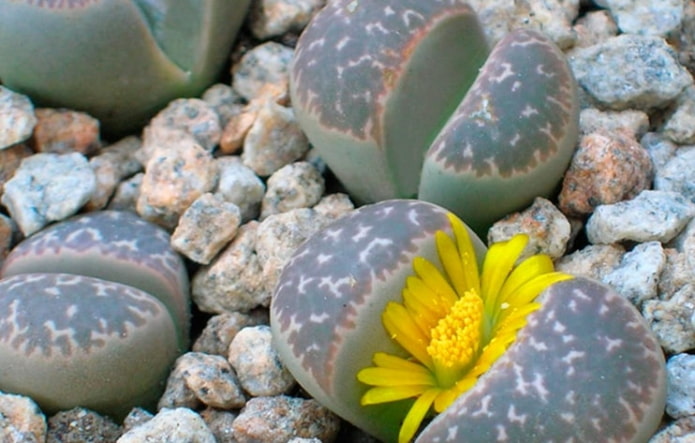
Species features
The main features of succulents are determined by their habitat, namely a dry and hot environment. In such conditions, you need to be able to survive, so each part of the plant helps them accumulate moisture and retain it as long as possible:
- The presence of special tissues for storing water. These fleshy tissues are usually located in the leaves or stems of succulents. They are designed to retain as much water as possible, which is especially useful during periods of drought.
- The root system has superficial and extended roots that collect moisture well.
- The special shape of the leaves also helps them survive in harsh conditions. The rounded shape and wax coating reduce evaporation, and the adaptive coloring protects against bright sunlight.
- However, succulents do not tolerate rot and low temperatures very well.
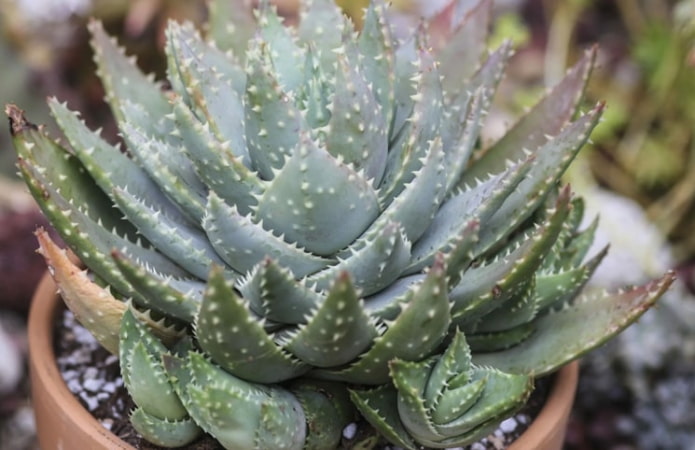
Types
There are a huge number of varieties of succulents, and each of them has its own unique appearance and features. I will tell you about the most popular and unusual representatives.
Crassula
One of the most popular species in the CIS is crassula, also known as fat woman. It is a common indoor flower, has a tree-like shape, and is easily propagated. The most common subspecies is crassula ovata, popularly known as the money tree.
Crassula hobbit looks impressive with unusual elongated leaves, as if rolled into a tube. There is also an obliqua – similar to a common crassula, but the leaves on the trunk are not round, but pointed.
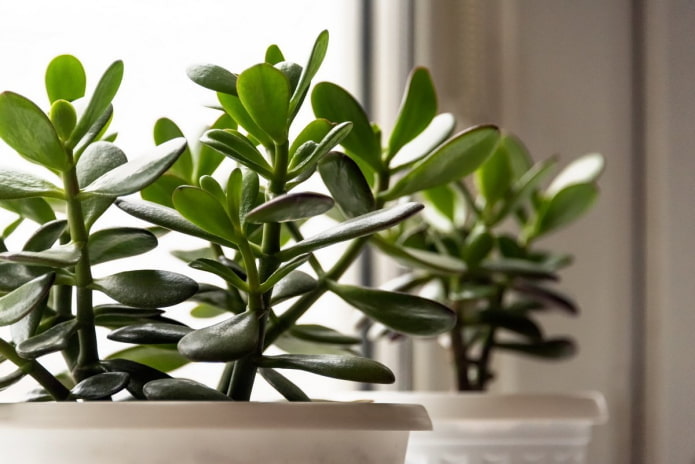
The photo shows a popular representative of the family – crassula
Euphorbia
The most numerous representatives of the Euphorbiaceae family, living in houses and apartments, are triangular and white-veined. Less common decorative varieties are the jellyfish head (the shoots on the stem resemble tentacles), and the obese (a ball resembling a cactus without spines).
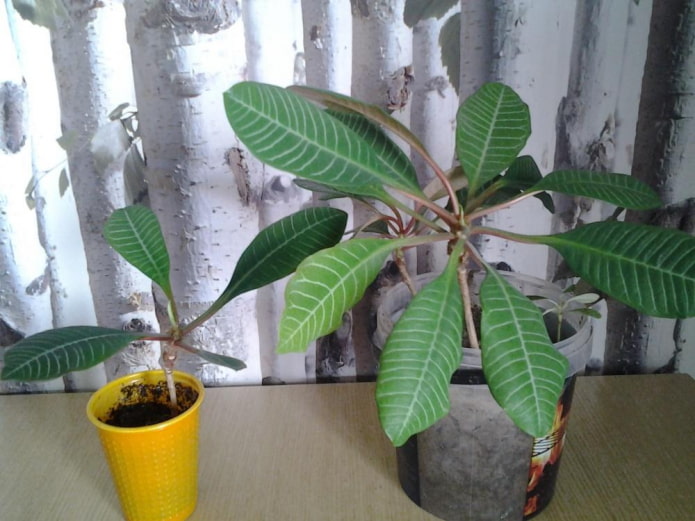
Duvalia
A dwarf leafless succulent from the Apocynaceae family. Its homeland is considered to be South Africa and the Arabian Peninsula. They have small superficial roots. The stems are erect and recumbent, the length of which is no more than 6 cm. Duvalia usually blooms in summer and autumn. The flower has different colors from dark purple to black. And the shape of the flower resembles a starfish.
For successful indoor growing, protect them from direct sunlight.
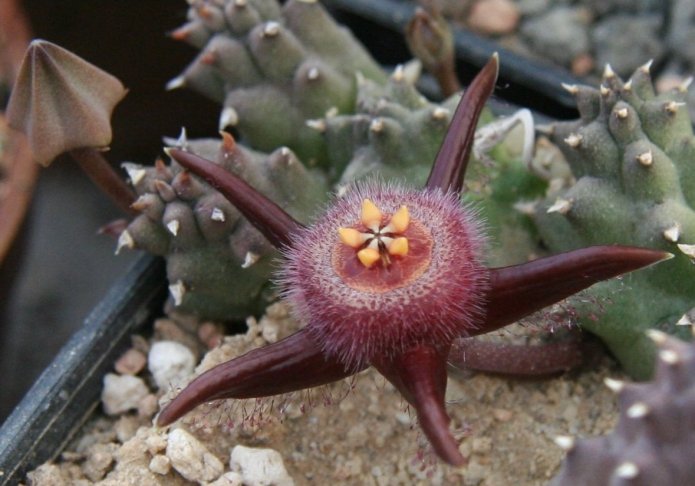
Stapelia
The stems of the succulent are unremarkable, but the appearance of the flowers distinguishes it from many other indoor plants. The flower resembles a star, it comes in absolutely different shades: from pastel to bright.
But there is one drawback – an unpleasant smell during flowering.
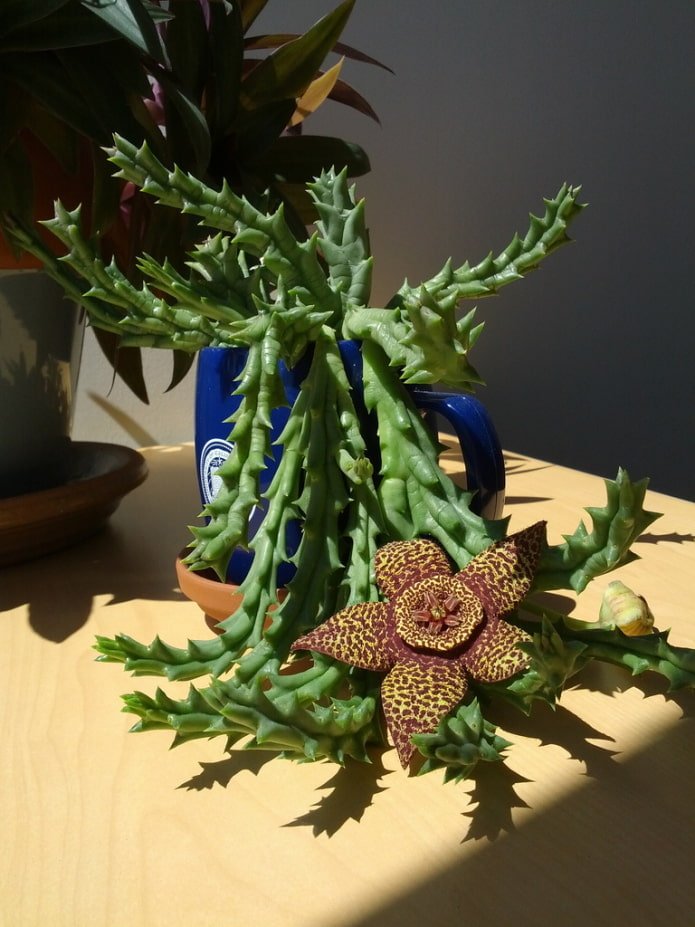
Echeveria
Another name is echeveria. In the course of evolution, it lost its trunk, it looks like a rosette of many leaves growing from the center. The shade and edges of the leaves vary from species to species:
- agave – pointed ends of a pink shade (resembles young),
- graceful – green-blue fleshy leaves (imitates a stone rose),
- humpbacked – flat shoots in the shape of a diamond.
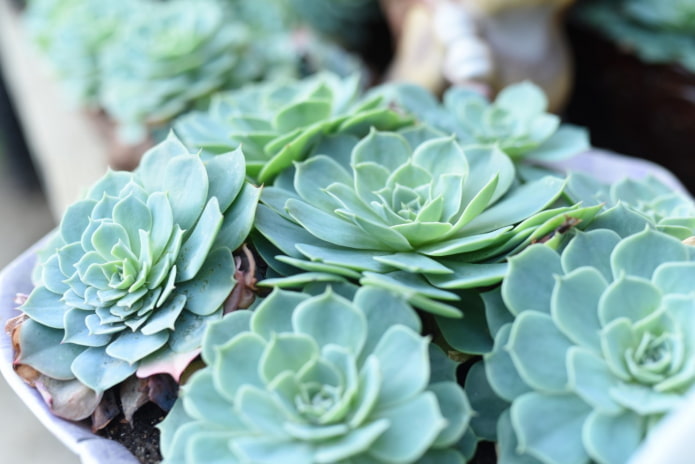
Aloe
This succulent has become widespread in interiors not only due to its ease of care, but also due to its healing properties. A familiar tree that often grows in grandmothers’ apartments is called aloe arborescens.
More decorative species – vera, jackson, aristata, juvenile look like bushes growing out of the soil.
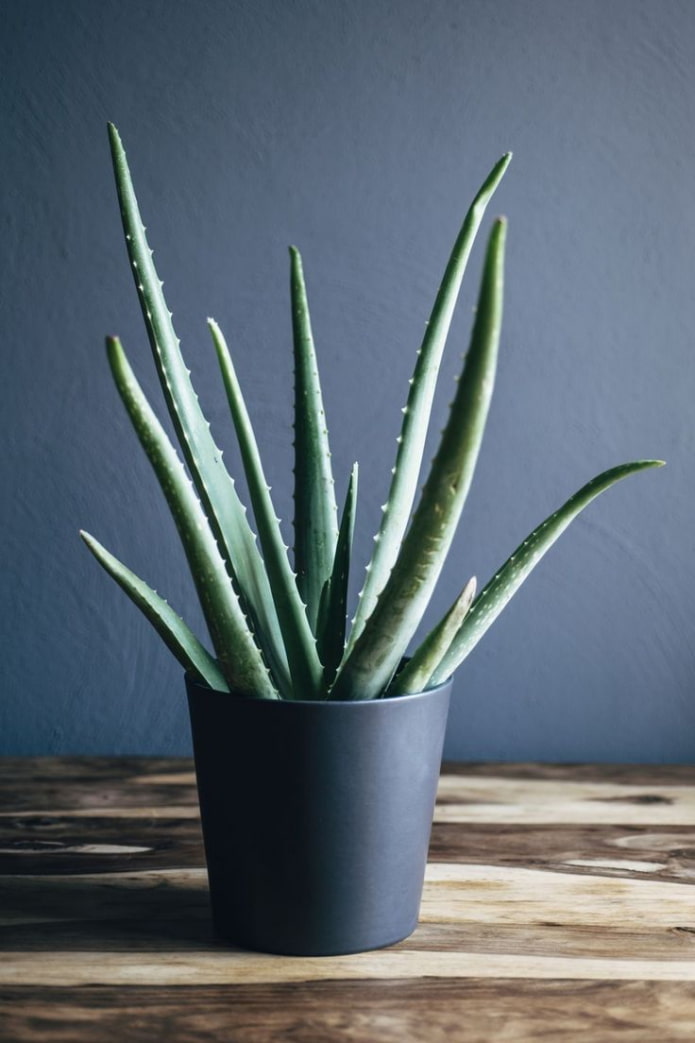
Haworthia
Some confuse them with small leaf aloe (aloe even has a subspecies called haworthia). However, haworthias belong to another family – xanthorrhoeaceae, and except for their appearance, they have nothing in common with aloe.
The main detail for which these flowers are loved is the white growths on the outside of the leaves. Some specimens (pearl, elongated) are covered with growths inside and outside.
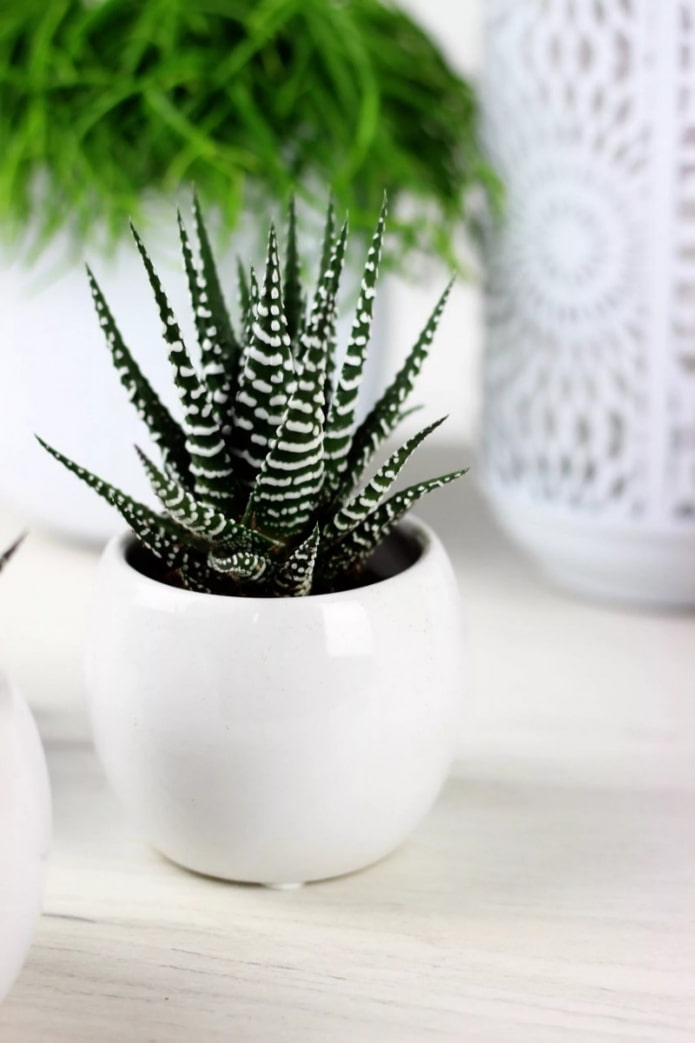
Monantes
Another representative of the Crassulaceae family. This dwarf succulent has thick and tightly fitting leaves. Loves bright lighting, but it is better to protect it from direct sunlight.
Its appearance will not leave anyone indifferent and will constantly attract the attention of guests. Beautiful flowers of an unusual shape go well with green dense leaves.
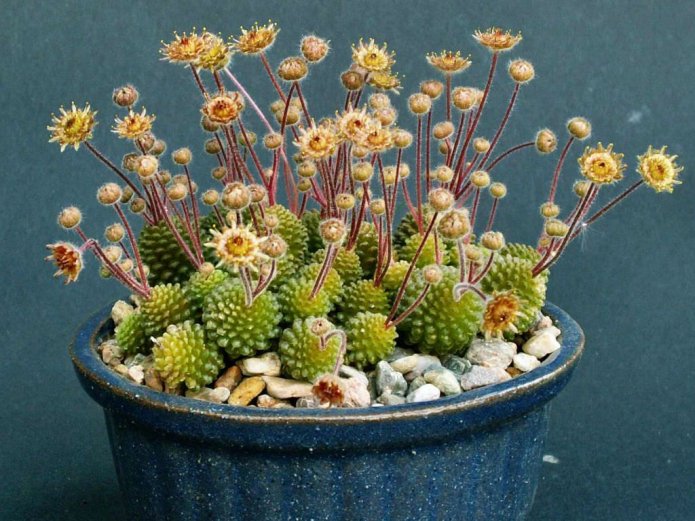
Senecio Rowleyana
They are classified as ampelous succulents: they are thin creeping branches with pea-shaped leaves on them. They can be solid green or variegated (with white or yellow dots, stripes).
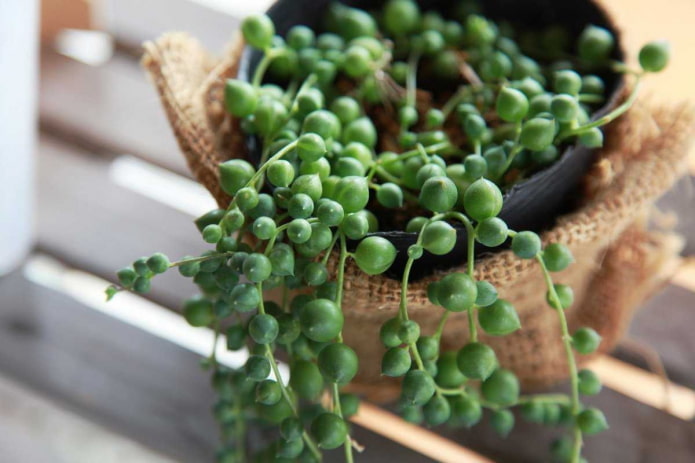
The photo shows Senecio rowleyani
Kalanchoe
The subspecies include stem, flowering succulents. More popular are Kalanchoe pinnate (with small “children” on the edges of sharp leaves) or Morgan (a flowering subspecies with round leaves).
Of the unusual representatives, one can single out the felt (pubescent leaves), paniculate (similar to echeveria).
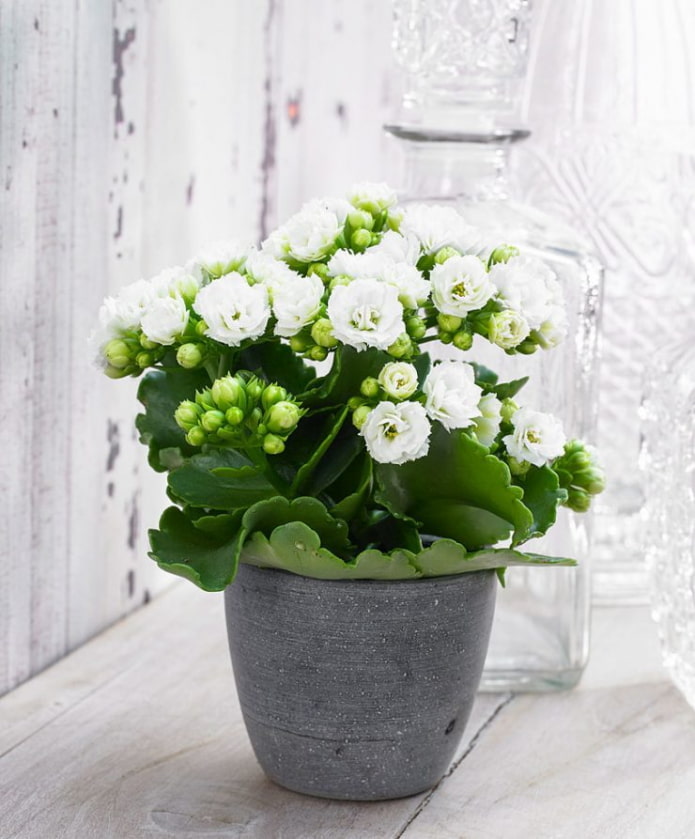
Adenium
A beautiful tree with a thick trunk, a sparse crown on the top and bright flowers. Obesity, Arabian or Multiflorum look like bonsai on their own, without requiring complex shaping.

Lithops or Argyroderma
The second name of the succulent is living stones. One plant is two dense leaves resembling pebbles. During flowering, a bud on a stem appears between them.
They look best in a composition of many units.
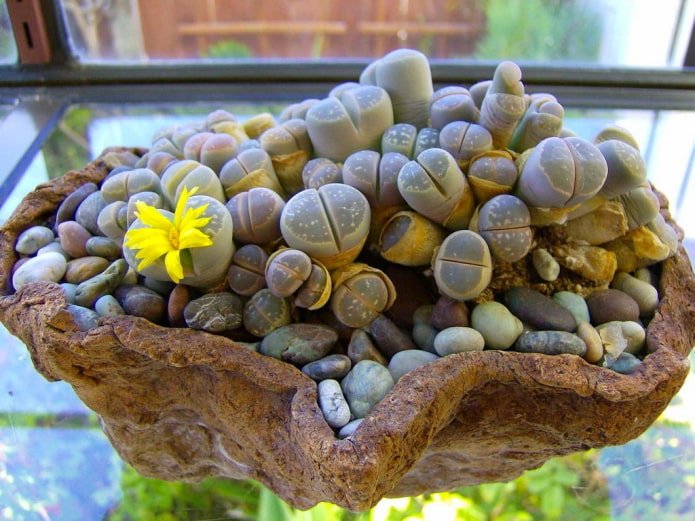
How to care for?
Despite their unpretentious lifestyle, succulents still need to be looked after. Follow the minimum care requirements and they will delight you with their beauty for a long time.
Temperature and humidity
In their usual climate, many representatives of the species have developed the ability to self-photosynthesis: that is, the main exchange in their cells occurs at night, during cool hours. Therefore, at home it is also advisable to provide a large temperature difference – hot during the day, cold at night (but you should not freeze them).
In the summer, feel free to take the flowerpots outside or to the balcony – the plants grow well in the fresh air. In open areas, you don’t even need to water them, summer rain is enough.
Important! In wet, cold autumn, you shouldn’t keep succulents outside, they don’t tolerate over-watering well.
It’s better to grow thrifty plants in low humidity conditions: succulents will tolerate dry, hot air from a radiator better than humid air in a bathroom.
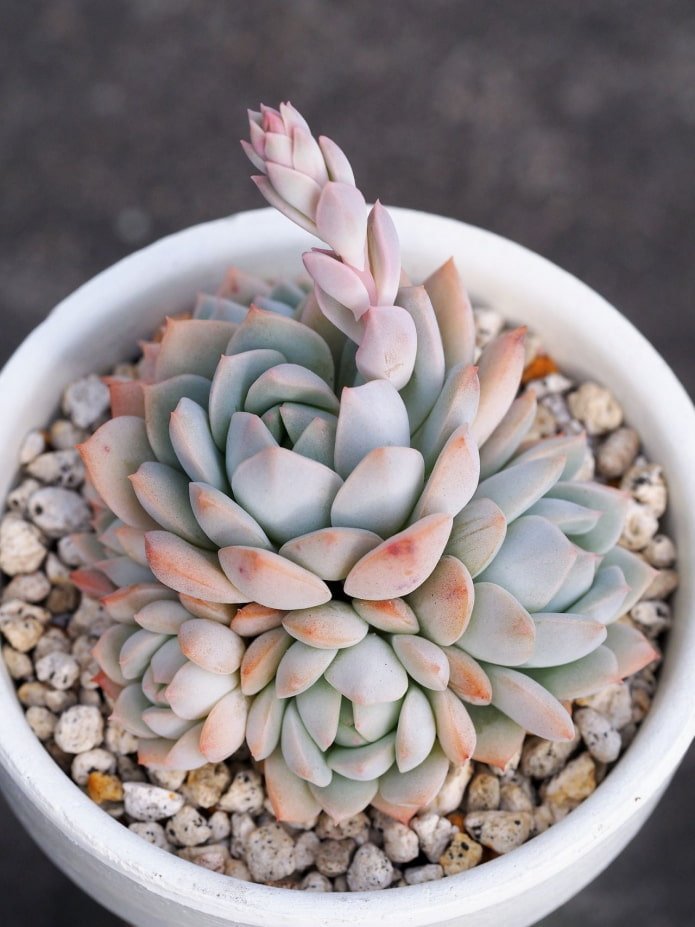
Lighting
Since in the wild, they live in hot, arid areas, to grow succulents indoors, you should provide them with constant light. One option is to put them on a windowsill, but it’s better to protect some varieties from direct sunlight – the tips will start to “burn” and change color. But this can be easily prevented by learning the care features for your species.
If growing in the sun is not possible, but there are a lot of succulents, it is recommended to supplement the lighting with a special phyto-lamp.
Soil
Another important factor in growing succulents is properly selected soil. In their homeland, they grow well in sand, so at home you need to organize the most similar conditions:
- Good drainage. The ideal soil should be well ventilated and allow water to pass through, because succulents do not tolerate stagnant moisture and can begin to rot.
- The soil should be porous to ensure ventilation of the roots. Again, in order to avoid the formation of rot in the root system.
- Neutral acidity level. For better absorption of nutrients, ensure a neutral or slightly acidic pH of the soil using slaked lime or ash.
- Be sure to ensure that the mixture contains sufficient minerals.
The easiest way to meet all the requirements is to buy a ready-made mixture. But if there is no opportunity or desire, then the soil mixture can be easily prepared by yourself. I will tell you about this below.
Absolutely! Check the soil moisture regularly and, if necessary, maintain the optimal moisture and acidity level for a particular type of succulents.
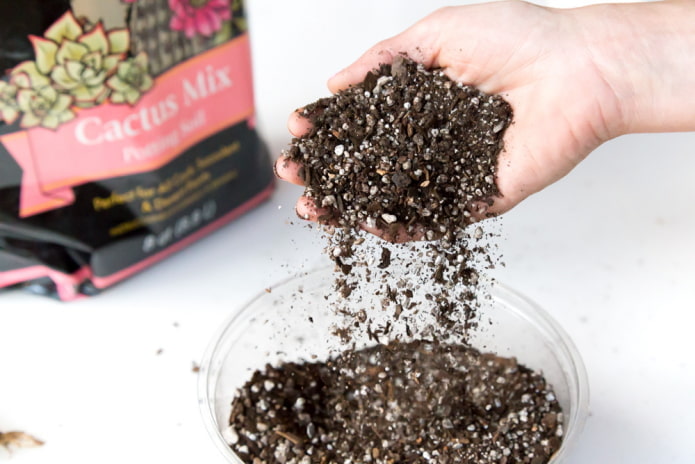
Pot
The main task of the pot is to provide optimal conditions for the growth and development of the root system. The requirements for the capacity vary depending on the type of plant: some require an elongated pot, while others require a wide one. It is better to look at the recommendations for a particular type of succulent. But there are general requirements and I will tell you about them now:
- Maintain the shape of the pot throughout the entire growing period, but the size should be changed once every 2-3 years during replanting.
- The size of the pot should be slightly larger than the size of the root system – about 10% in diameter. It is important that the pot is not too large, otherwise water will be retained and rot will form.
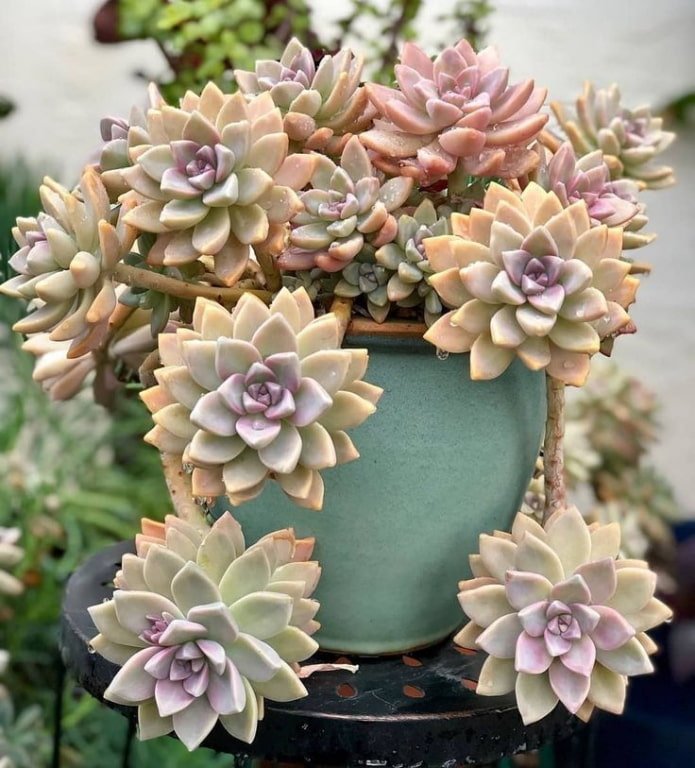
Watering
Even despite the water reserves in the cells and the ability to save it, succulents still need regular watering. The best way is to observe the soil – hold a wooden stick near the pot and pierce a layer of 1.5-2 cm from the surface. If this entire space is dry – you can water. Wet – postpone moistening for later.
Important! There is an unspoken rule: it is better to skip watering than to overwater.
It is also advisable to avoid severe drying out: if the leaves have withered and become limp, then too much time has passed between waterings.
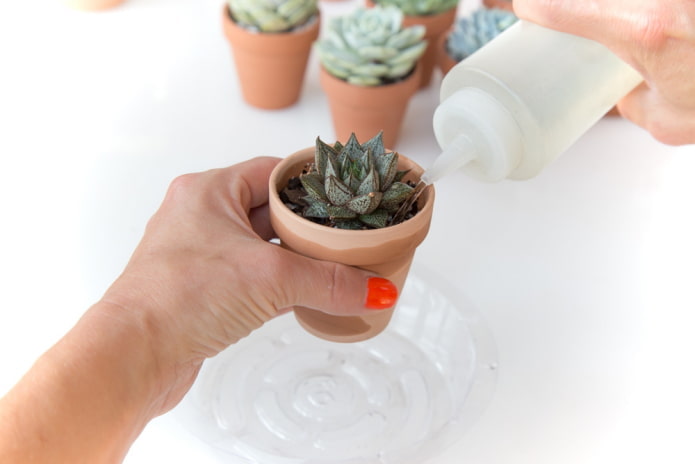
Fertilizers
Fertilizers will help provide comfortable conditions for plants:
- fertilize succulents during the period of active vegetation (March – early September);
- do not fertilize immediately after transplanting, it is better to wait 4 weeks;
- use universal compositions with a low nitrogen content;
- fertilize plants in poorly lit areas can lead to poor absorption of nutrients.
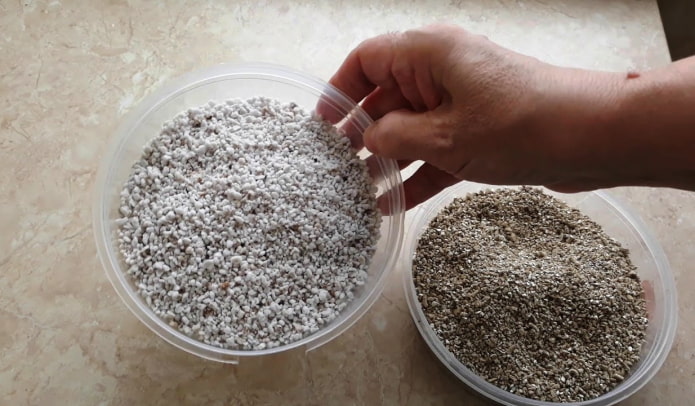
What do you need to know about propagation?
The process is different for each species, I will analyze the main options:
- Leaves. Most succulents are distinguished by the ability to grow from a leaf – the process is not fast, but at the same time you can grow a large number of plants at once.
- Cuttings. The method is possible only for stem varieties, they are preferred as an acceleration of growing a new flower. Cut a branch with several leaves, stick it into the ground or vermiculite, water it and leave it: soon the root will form, the active growth phase will begin.
- Babies. Some varieties form babies on themselves: for example, Kalanchoe. If you use these crumbs, planting them in the ground, they will soon become independent representatives of the species.
- Seeds. The slowest method, but it facilitates transportation from other countries and continents.
Important! Containers for succulents must have drainage holes or a thick drainage layer of large expanded clay so that water does not stagnate in the roots.

The photo shows a variant of succulent propagation by leaves
Transplantation nuances
Before transplanting any type of purchased succulent into a new pot, you need to prepare the soil for it. You will find numerous ready-made mixtures on sale, but not all manufacturers take a responsible approach to their preparation and maintain proportions.
See how to transplant a cactus.
Therefore, it is more reliable to prepare the soil at home. There are about as many recipes here as there are variations of borscht among different housewives, but the main thing to remember is that the soil should be “poor” and loose.
The easiest way is to mix 1 part of turf soil, 1 part of peat substrate, 1 part of leavening agents – brick or stone chips, river sand, purchased perlite, vermiculite, expanded clay.
Plants are replanted as needed, it is better to plan replanting for spring (from March-April) or summer.
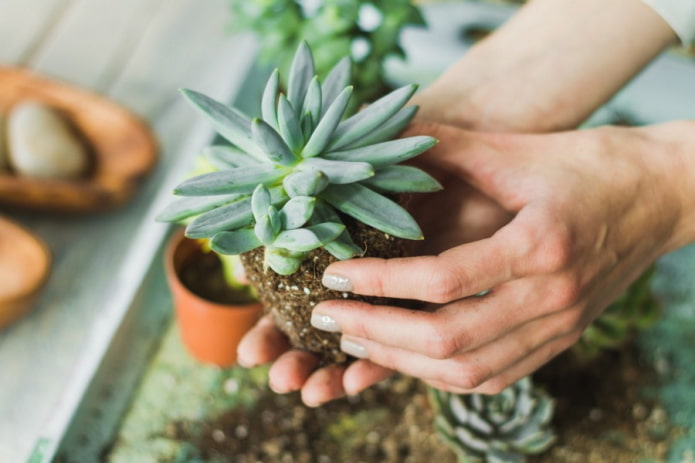
Beautiful design options and compositions
Most often, succulents can be seen on sale in florariums: special transparent vessels for growing them. As a container, you can use a regular aquarium or a special jar made for flowers.
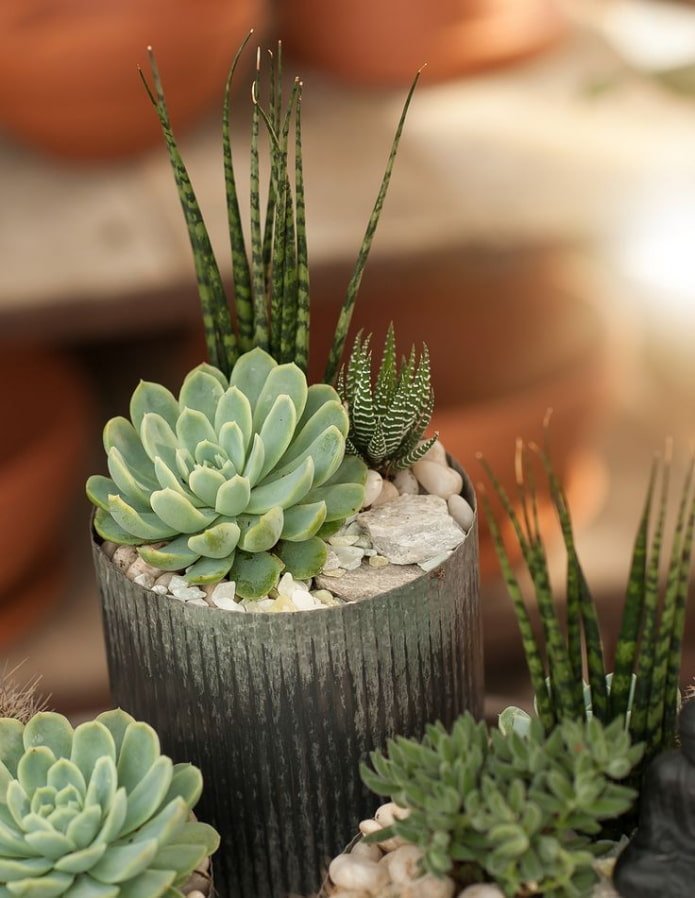
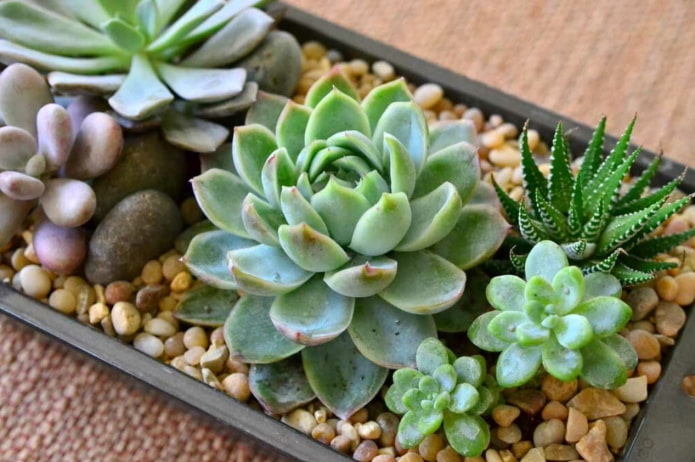
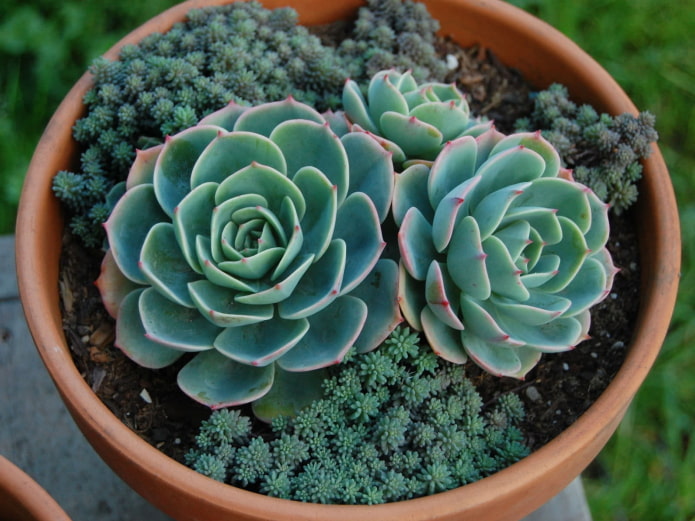
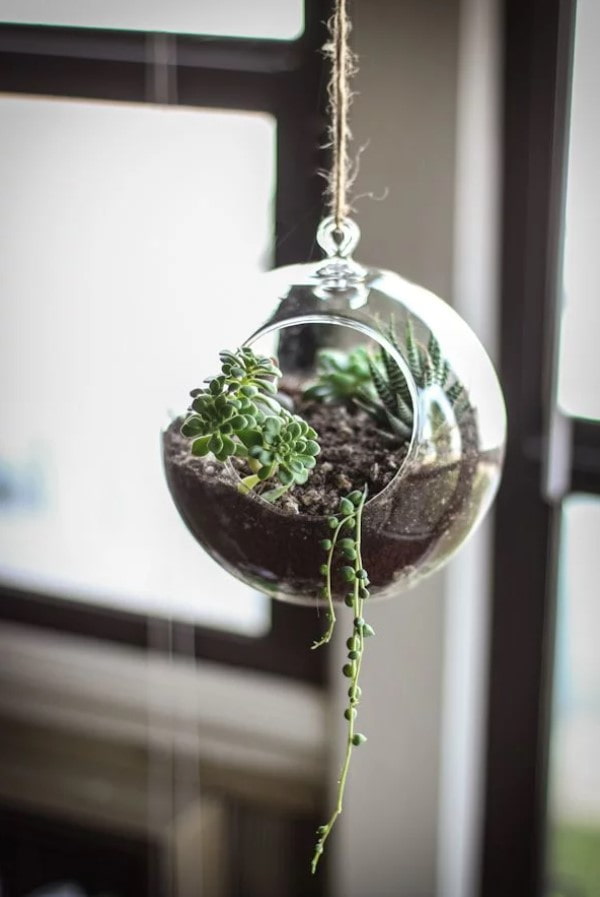
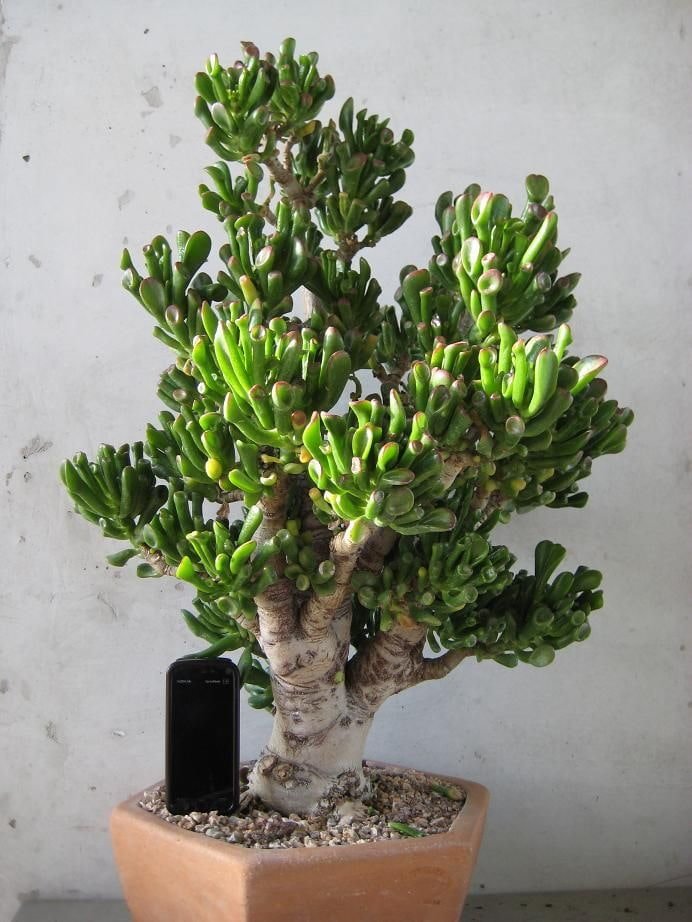
Original compositions in beautiful dishes look no less impressive: a tea pair, a tray, a teapot. Large and small containers made of any materials are suitable: from espresso coffee mugs to enamel basins.
Ampelous representatives look great in head-pots: the plant will replace a fancy hairstyle with long hair or a protruding hedgehog. Bonsai are formed from stem species, Crassula Hobbit looks especially good in this design.
The most advanced gardeners can assemble a green picture from live cuttings: it will perfectly fit into the eco-style.
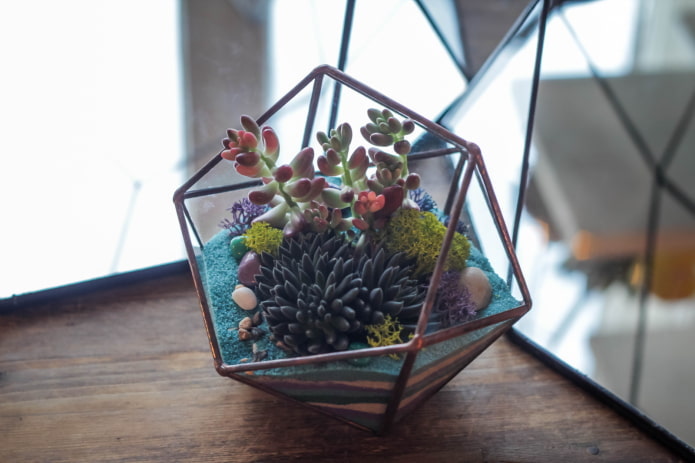
The photo shows a decorated florarium
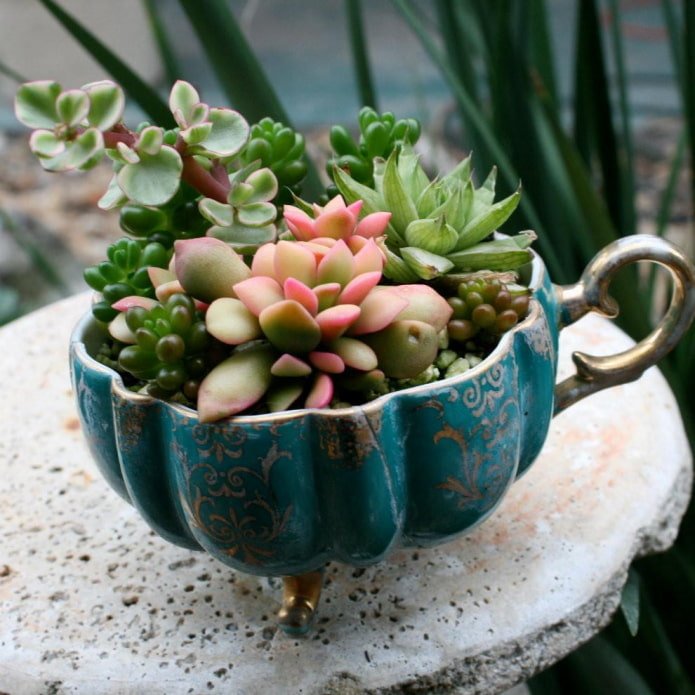
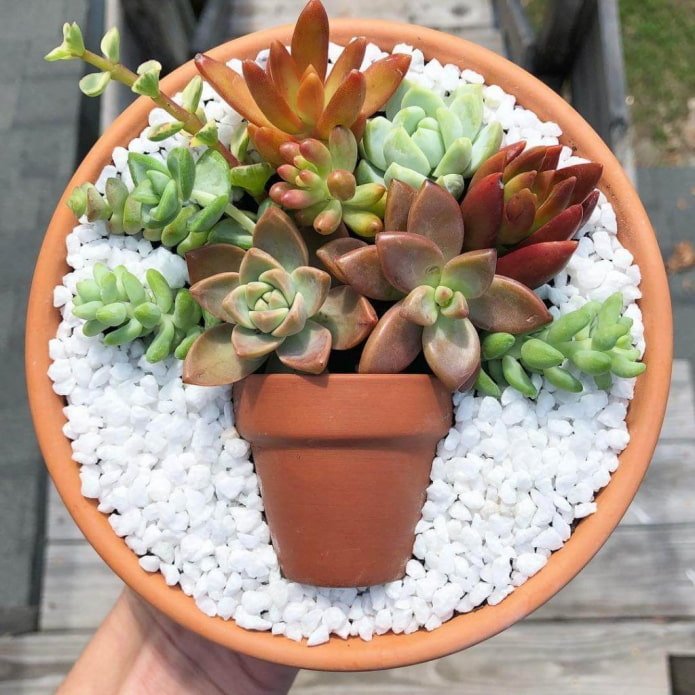
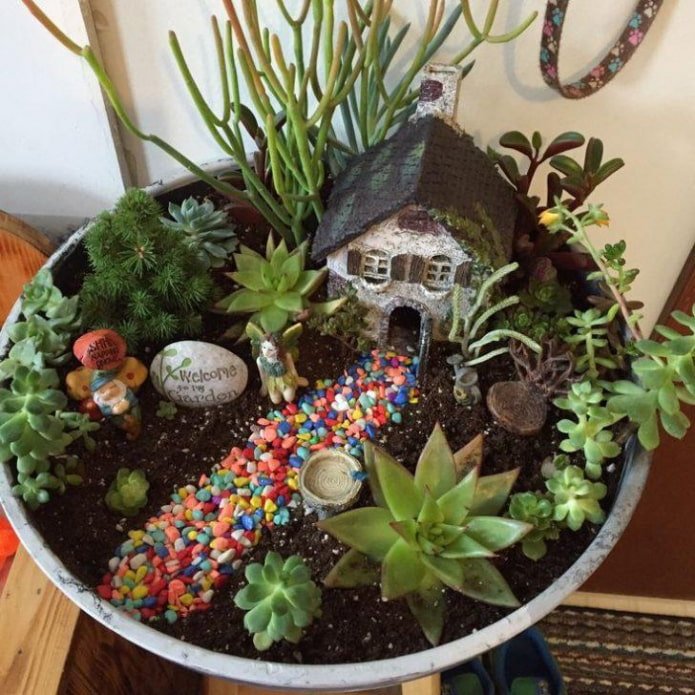

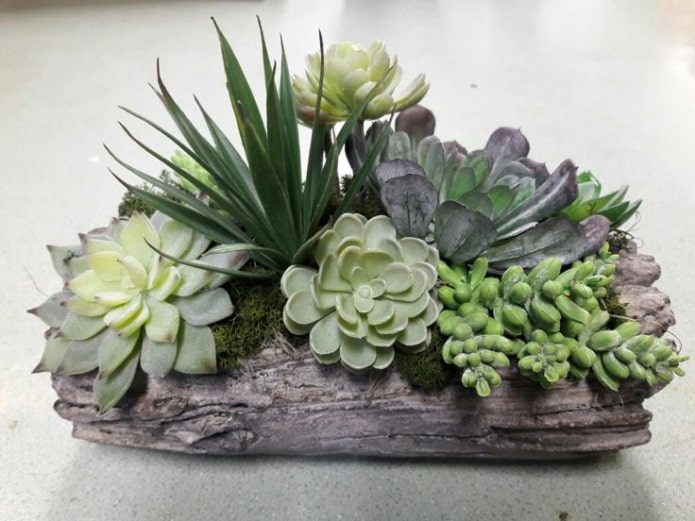
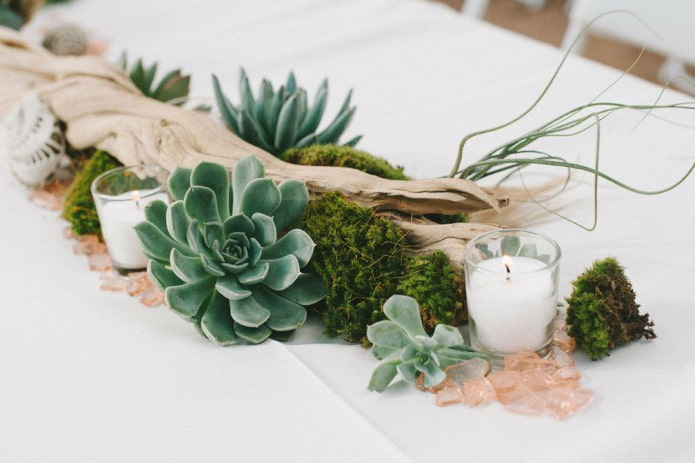
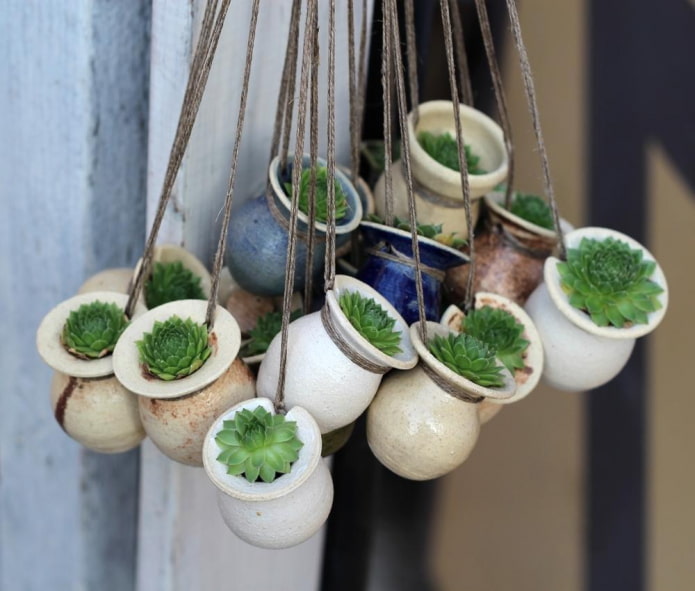
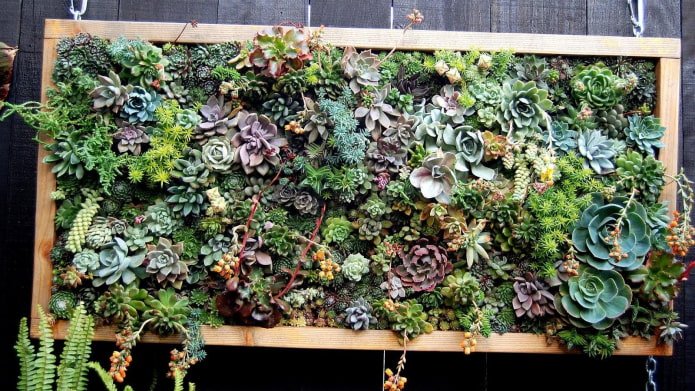
How do they look in the interior?
Succulents are universal plants for any room. They do not take up much space, are conveniently placed on work tables, narrow windowsills, small shelves, bookcases.
In the design of the living room, the composition in a beautiful florarium will take root on the coffee table, in the bedroom – on the bedside table. For the kitchen, you can make or buy special pots on magnets and plant a garden on the refrigerator.
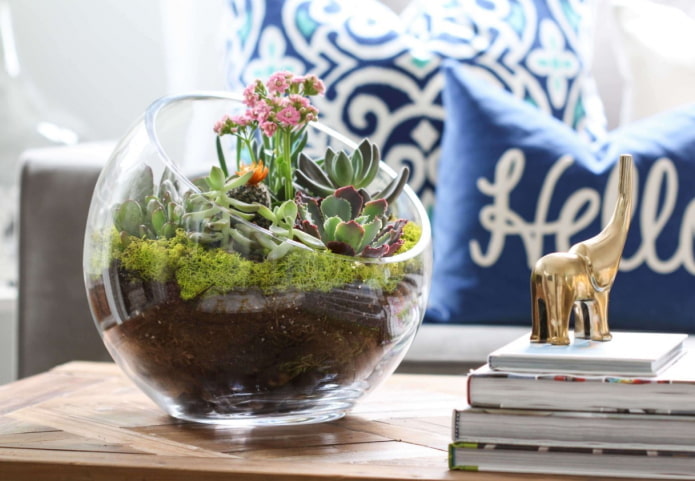
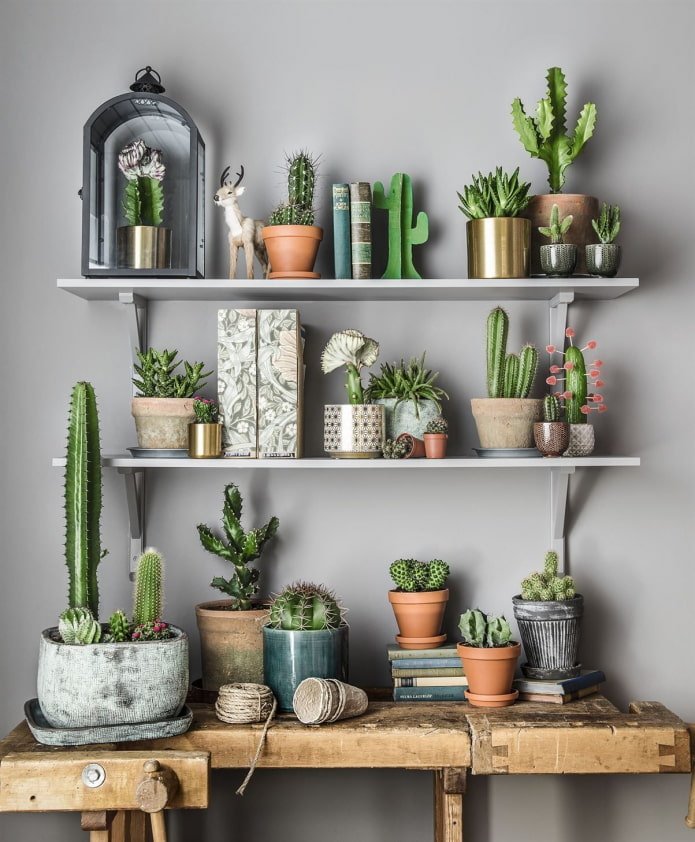
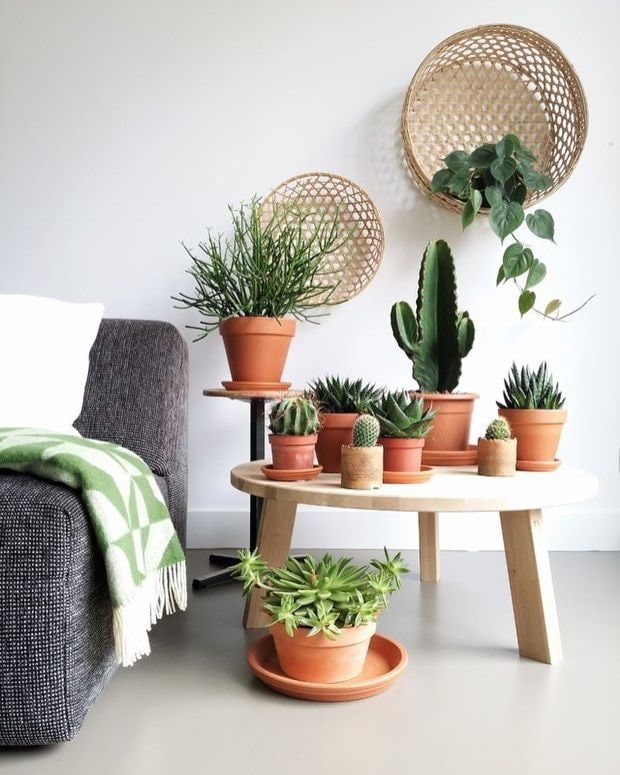
Several containers in the children’s room will teach the baby to take care of green inhabitants on his own.
Some shade-loving varieties of succulents will take root in the bathroom, but they should be kept away from sources of water.

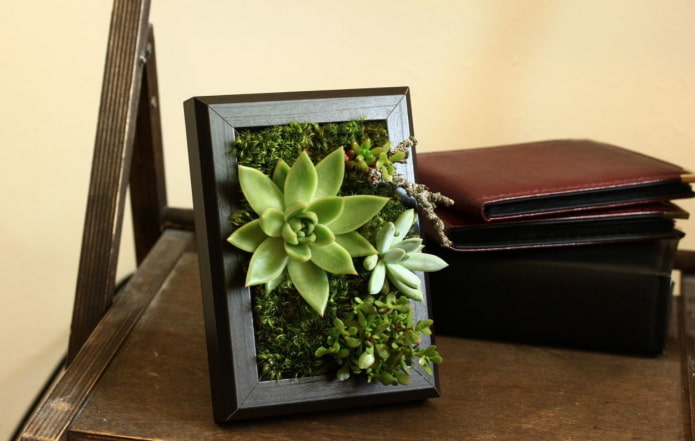
The photo shows a green painting on the table
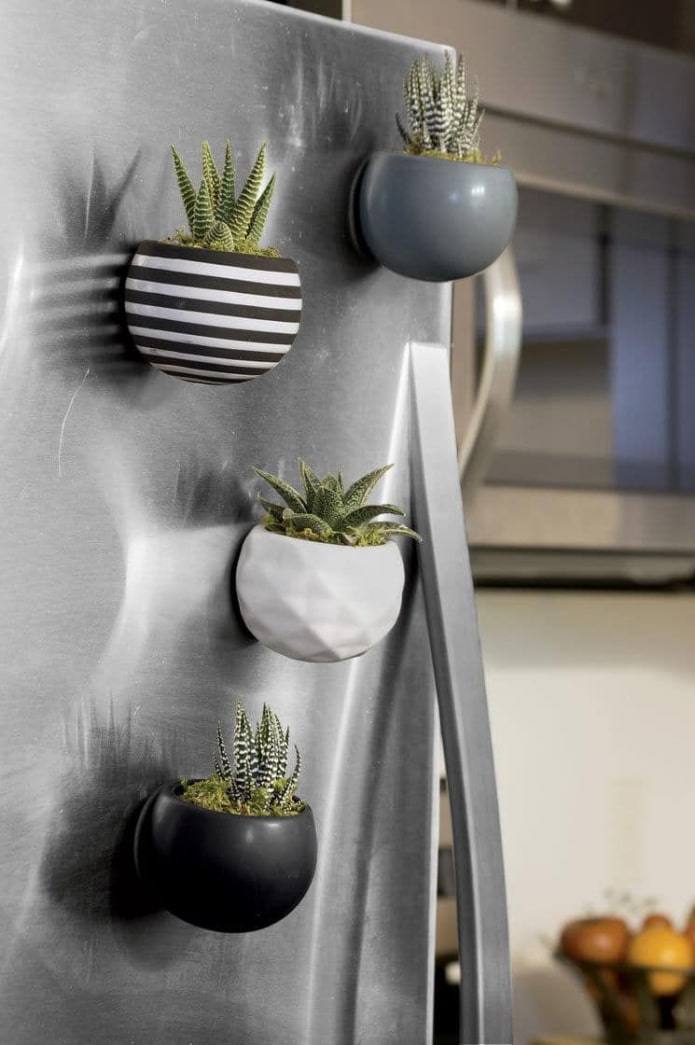
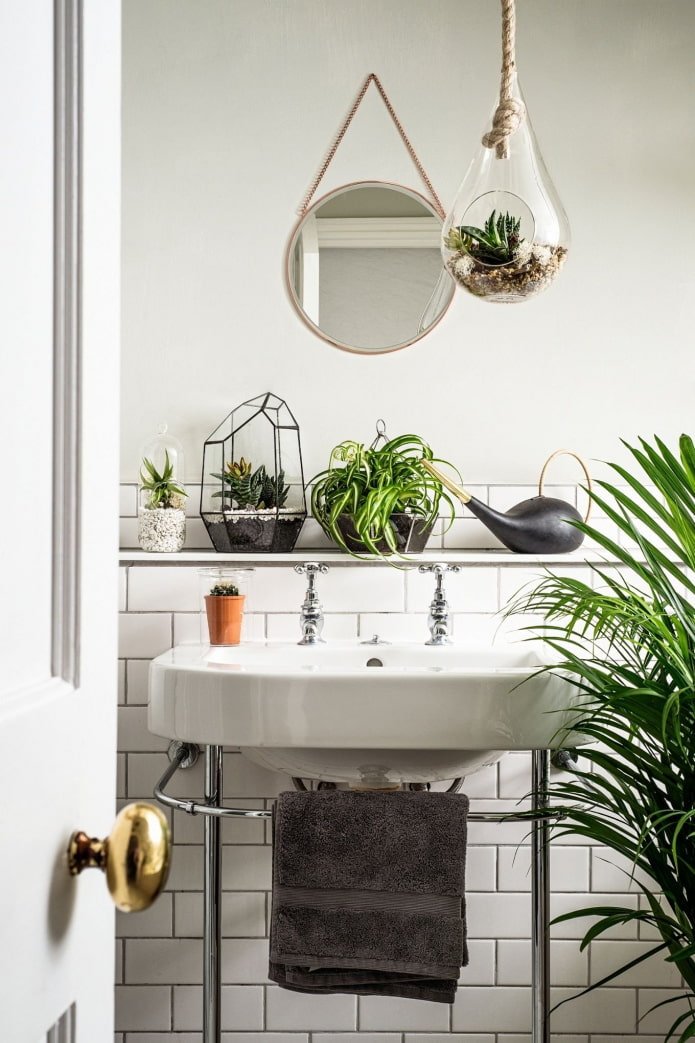
Succulents are loved by children and adults, beginners and experienced flower growers: they do not require serious care, please with their shapes and colors, easily adapt to any conditions.
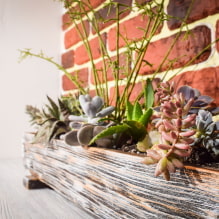
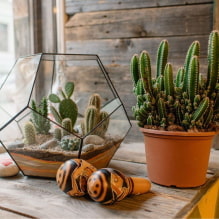
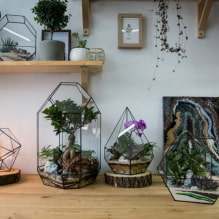
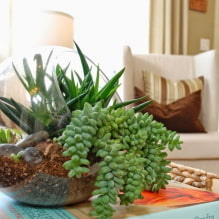
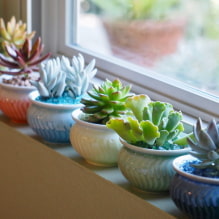
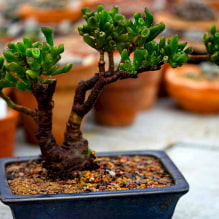
Now reading:
- Red kitchen: stylish design solutions and more than 60 interior photos.
- Purple curtains in the interior: 75 photos for the bedroom and other rooms.
- Purpose of primer: its role and tips for correct application
- Application of porcelain stoneware in the interior: types, advantages and disadvantages (43 photos)
- Using Plants in Interior Design: Tips and Trends for 2023 (33 Photos)